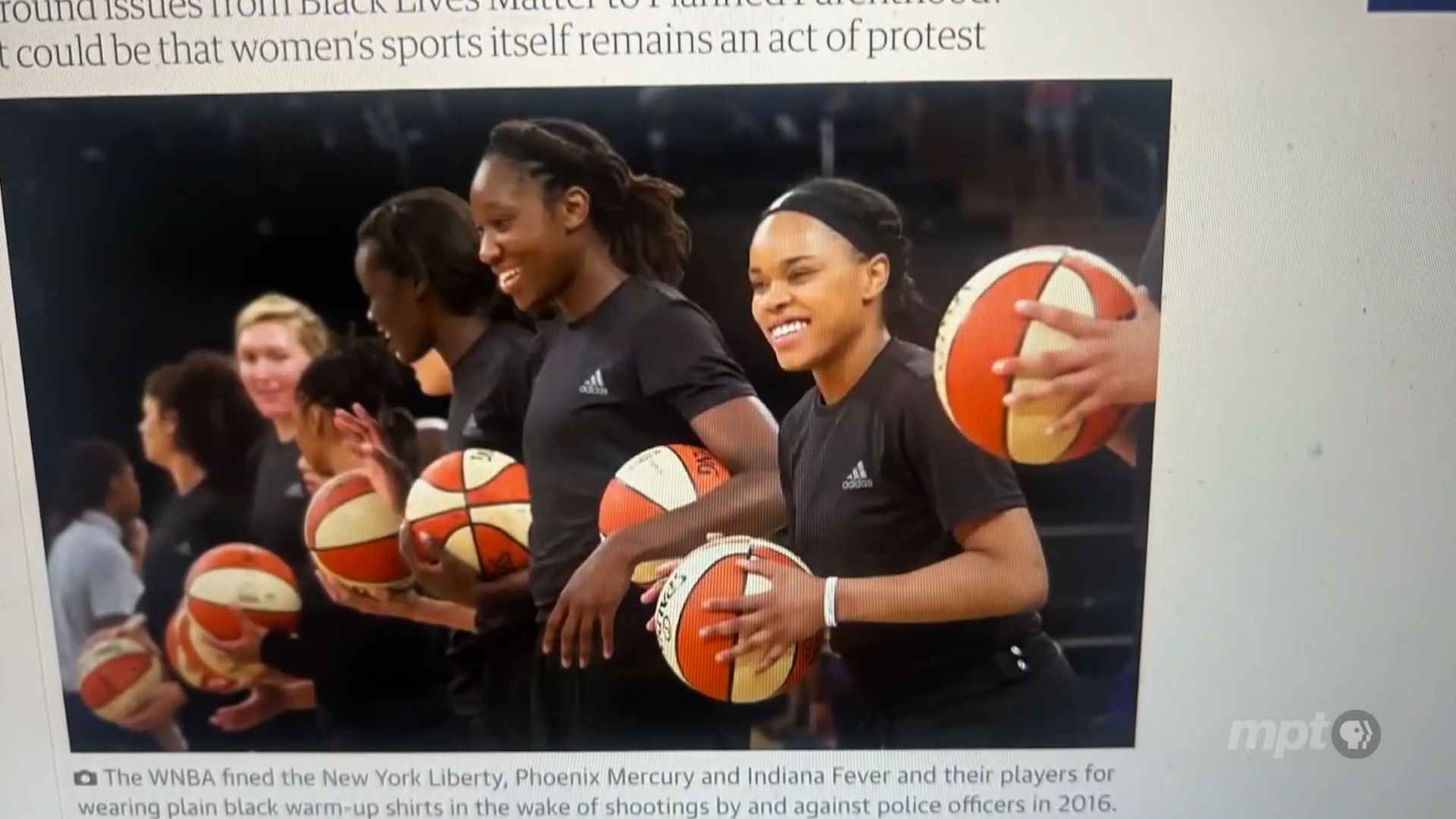
Athletes have historically used their public platform and collective voice to advocate for social change.
Young Athletes Using Platforms to Promote Social Justice
Grades 9-12
This lesson focuses on two main ideas:
- Ways in which individuals and groups influence public opinions and public policy
- The impact of collective action
Procedure
INTRODUCTION (15 minutes)
- Display the vocabulary words in one column and the definitions in another column in random order. Challenge students to match the words with the correct definitions in one minute. Review correct answers and clear up any confusion.
- Have a student volunteer read the lesson introduction, then show the State Circle video excerpt.
- As a class, discuss the lesson’s essential questions and thinking questions.
EXTENSION (30-120 minutes)
Complete extension activities with students, as you see fit.
ASSESSMENT (15 minutes)
Have students apply their newfound knowledge by completing a Summative CER on the lesson using evidence from the video and activity resources as support.
REFLECTION (10 minutes)
Have students complete a reflection.
Standards
Civics
- D2.Civ.5.9-12.
Evaluate citizens’ and institutions’ effectiveness in addressing social and political problems at the local, state, tribal, national, and/or international level. - D2.Civ.10.9-12.
Analyze the impact and the appropriate roles of personal interests and perspectives on the application of civic virtues, democratic principles, constitutional rights, and human rights. - D2.Civ.14.9-12.
Analyze historical, contemporary, and emerging means of changing societies, promoting the common good, and protecting rights.
Citizens and Public Policy
The student will explain roles and analyze strategies individuals or groups may use to initiate change in governmental policy and institutions by: Evaluating the tools that individuals or groups may use to influence laws, government policies, and elections including referendum, acts of civil disobedience, voting, boycotts, financial contributions, digital communication, and voting drives.
Summative CER
Option 1:
Use evidence and reasoning from the lesson video and activity resources to describe three methods citizens can use to influence public opinions and public policy.
Option 2:
Make an argument for the power of collective action. Use evidence and reasoning from the lesson video and activity resources to support your argument.
Reflection Questions
- Suggest a topic for discussion at the next Social Justice Alliance Symposium.
- What have you done or could you do to be an advocate for social justice?
Summative CER Rubric
| No Response Score Point 0 |
Not There Yet Score Point 0.5 |
Beginning To Score Point 0.75 |
Yes Score Point 1.0 |
|---|---|---|---|
| The claim is missing | The claim is incorrect or irrelevant. | The claim partially takes a position on the topic or issue addressed within the prompt. | The claim takes an appropriate position on the topic or issue addressed within the prompt. |
| There is no type of evidence in the response | The evidence is irrelevant or does not support the claim. | The evidence partially supports the claim and demonstrates some understanding of the topic or text, using appropriate sources. | The evidence supports the claim and demonstrates a strong understanding of the topic or text, using appropriate sources. |
| There is no use of words, phrases, and clauses to create cohesion and to clarify the relationship between the claim and evidence. | Use of words, phrases and clauses fail to show or explain any relationship between the claim and evidence. | Scientific words, phrases, and clauses used lack cohesion but partially clarify the relationship between the claim and evidence. | Appropriate scientific words, phrases, and clauses are used to create cohesion and to clarify the relationship between the claim and evidence. |
Teacher Resources
- BSU-UMD Social Justice Alliance
- 2nd LT Richard Collins III Foundation
- White Man Gets Life In Prison For Killing Black Army 1st Lt. Richard Collins III NPR January 15, 2021
- NCAA athletes are receiving millions of dollars from collectives created by rich college sports fans Fortune May 16, 2022
- How the NCAA’s endorsement rule change is paying off for college athletes PBS News Weekend November 26, 2022
- Pay for Play Is on the Way The Assembly May 1, 2023
- Should College Athletes Be Paid? Reasons Why or Why Not Maryville University